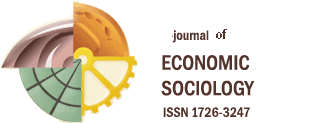Vasiliy Anikin
Human Capital: Genesis of Basic Concepts and Interpretations
2017.
Vol. 18.
No. 4.
P. 120–156
[issue contents]
The present paper is aimed at considering the evolution of human capital theory. Drawing on the wide range of classical and recent studies, the author shows the link between changes in economies of industrially developed countries and the development of the human capital theory revealed in the expanded list of indicators measuring human capital. The author proposes a periodization of the human capital theory suggesting five phases: (1) the pre-industrial phase (up to the seventeenth century); (2) the phase of mass education (the nineteenth through the first half of the twentieth century); (3) the late industrial period (1960s–1970s, the period when the core of the human capital theory was established); (4) the post-industrial period I (1980s–2000s); and (5) the post-industrial stage II or contemporary period (1980s–2000s). The study reassesses narrow interpretations, which still widely exist among applied economists. Based on the findings of the human development studies, the author argues for a broader list of indicators of human capital, and, specifically, considers human capital through the lens of national development; moreover, this coincides with the core of the given theory. It is shown that the traditional interpretation of human capital, known as years of schooling and training, does not represent the current situation in the economy, and can be extremely harmful to society if it is adopted as the basis of public policy oriented to the formation and growth of society. The present study can be useful to both economists and sociologists focusing on the indicators of human capital and its contribution to the socioeconomic development of a modern society.
Citation:
Anikin V. (2017) Chelovecheskiy kapital: stanovlenie kontseptsii i osnovnye traktovki [Human Capital: Genesis of Basic Concepts and Interpretations]. Economic Sociology, vol. 18, no 4, pp. 120-156 (in Russian)




.gif)






 ©
© 